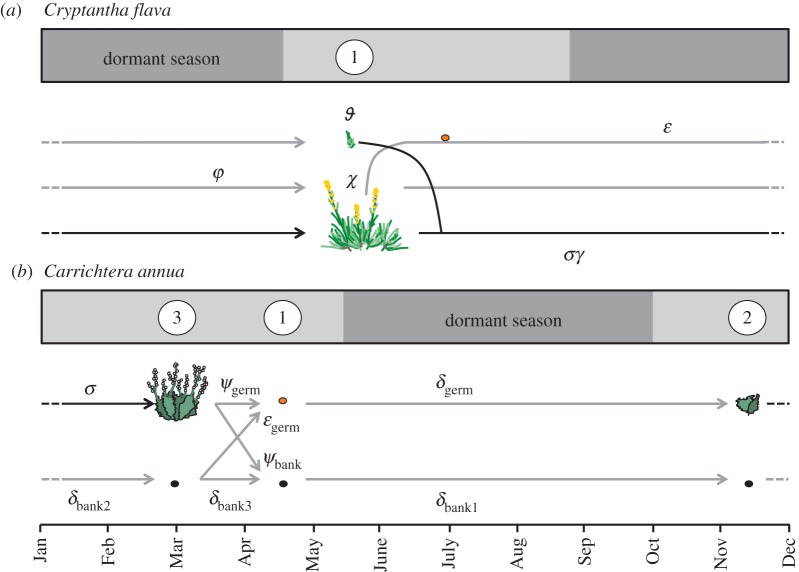Figure 3.
Life cycles of (a) the perennial C. flava and (b) the annual C. annua. Light grey and dark grey areas in the rectangles represent periods of photosynthetic activity and vegetative dormancy, respectively. White circles represent timing and frequency of field censuses. (a) In Cryptantha, established individuals can survive (σ) to the next year and change in size (γ), become reproductive (φ), producing a given number of flowering stalks (χ) whose seeds may then establish (ɛ) and achieve a specific size the next year (ϑ). (b) In Carrichtera, reproductive individuals may produce seeds (ψgerm) that will germinate after the dry season if they survive (δgerm). Seedlings may then survive (σ) to become reproductive the next year. Reproductive individuals can also contribute to the seedbank (ψbank). Seeds in the seedbank may stay dormant during each period (δbank1,2,3) and emerge as germinable seeds in April (ɛgerm). Black arrows in both life cycles represent demographic events of established individuals, while grey arrows represent events during sexual reproduction.

